One of the prime benefits envisioned by Memphis River Parks Partnership with the transformed Memphis riverfront was with new connected trails, better signage, and three new parks – climaxed by $61 million Tom Lee Park – it would send a positive, progressive new message about our river city just when it needed it most.
Last week alone, this positive Memphis brand was again on display with another international award for Tom Lee Park and with a national feature about highly regarded, internationally celebrated artist, Theaster Gates, whose sculpture, A Monument to Listening, whose intent is to spark honest discussions about the city’s aspirations and about its racial challenges.
Choose 901 put it well: “Memphis is once again making waves, this time with its riverfront receiving international acclaim. The American Society of Landscape Architects (ASLA) has bestowed a Professional Award on Tom Lee Park, while the park also secured a prestigious SITES certification for sustainability. Both honors underscore the park’s transformative impact on the city’s landscape and position Memphis as a leader in innovative, sustainable urban design.
“Tom Lee Park stands tall among global urban design giants. Winning an honors award from the ASLA, the park is in esteemed company with projects from across the world, including China, Thailand, and New York City. The park’s redesign has elevated Memphis’ reputation, making the riverfront not just a local favorite but a point of international pride. This honor cements the park’s place as a landmark for modern, sustainable urban design.
“What’s particularly exciting about the ASLA award is its significance for urban spaces. These awards are reserved for projects that improve the health, safety, and beauty of outdoor places, and Tom Lee Park does just that. From its sprawling green spaces to its unique play areas and cultural installations, it offers a space for Memphians and visitors alike to experience the Mississippi River in an entirely new way. The park is a shining example of what’s possible when communities and designers work hand-in-hand to rethink public spaces.
High Praise
Each year, the ASLA Professional Awards honor the best in landscape architecture from around the globe. The prestige of the ASLA awards program relies in large part on the high caliber of the juries convened each year to review submissions. Founded in 1899, ASLA is the professional association for landscape architects in the United States, representing more than 15,000 members.
The ASLA honors award for Tom Lee Park was for urban design. In addition to Tom Lee Park, honorees in this year’s urban design category were African Ancestors Memorial Garden in Charleston, S.C.; Alpine Garden and Amphitheater in Lijiang, Yunnan, China; Benjakitti Forest Park in Bangkok, Thailand; EcoCommons in Atlanta; Louisiana Children’s Museum in New Orleans; Sandy Hook Memorial in Newton, Ct.; St. John’s Terminal in New York City; and The Bay in Sarasota, Fla.
A few months earlier, Memphis River Parks Partnership president/CEO Carol Coletta received ASLA’s LaGasse Medal, the highest honor given yearly to a non-landscape architect that has made “contributions to the management and conservancy of natural resources and/or public landscapes.”
Choose 901 adds: “What’s particularly exciting about the ASLA award is its significance for urban spaces. These awards are reserved for projects that improve the health, safety, and beauty of outdoor places, and Tom Lee Park does just that. From its sprawling green spaces to its unique play areas and cultural installations, it offers a space for Memphians and visitors alike to experience the Mississippi River in an entirely new way. The park is a shining example of what’s possible when communities and designers work hand-in-hand to rethink public spaces.”
SITES for Memphis’s Most Valuable Site
The SITES designation for Tom Lee Park recognizes the park’s sustainability in the planning, design, construction and management of landscapes and other outdoor spaces. SITES supports landscape architects, planners and others in implementing nature-based solutions and its projects enhance biodiversity and mitigate climate change, while conserving resources, improving public health, and protecting critical ecosystems.
SITES-certified projects help reduce water demand, filter and reduce stormwater runoff, enhance biodiversity, provide pollinator and wildlife habitat, reduce energy consumption, improve air quality, improve human health, increase outdoor recreation opportunities and much more.
The recognition continues the significant attention that the riverfront is receiving in awards and media coverage. Fast Company magazine lauded the remarkable change on the Memphis riverfront, naming Tom Lee Park one of the top three urban design World Changing Ideas. The Life on the River playground in Tom Lee Park was named one of the 11 Most Unique Playgrounds in the U.S. by Mental Floss. The London Times included Tom Lee Park among the must-do activities during 48 hours in Memphis in its article This is America’s Most Fun City Right Now — Here’s Why. Bilbao Metropoli 30 named the park one of the best 100 projects in the world for 2023.
Choose 901 continued: “And it’s not just critics who are singing the park’s praises. Since reopening, Tom Lee Park has welcomed over one million visitors. Whether they’re locals enjoying a weekend stroll, families flocking to the Life on the River playground (which Mental Floss named one of the most unique playgrounds in the U.S.), or international tourists following The Times’ recommendations, it’s clear that the park has become a major attraction.
Remaining a Leader
“The success of Tom Lee Park is just the beginning for the Memphis River Parks Partnership. With six miles of riverfront under its management, the Partnership is committed to continuing its work in transforming the riverfront into a space for everyone to enjoy. Plans are underway to enhance other parks and public spaces along the river, ensuring that Memphis remains a leader in sustainable urban design.
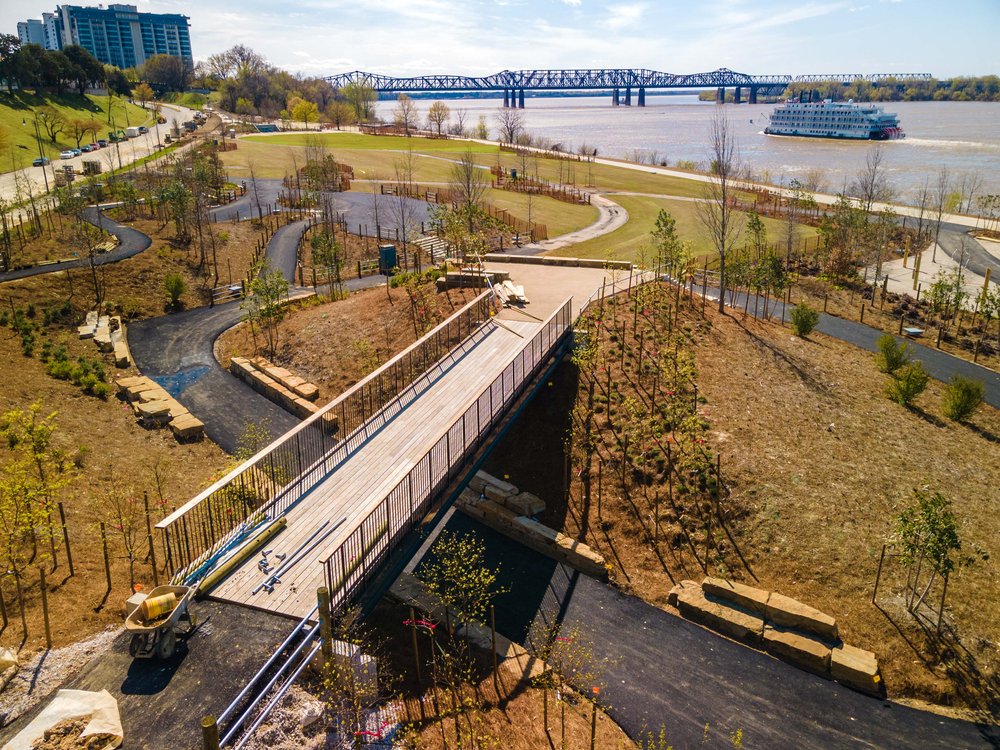 “For Memphians, this means even more opportunities to invest in and enjoy their city. Whether it’s through outdoor recreation, community events, or simply spending time by the river, the revitalized riverfront offers countless ways to connect with the city’s natural beauty. Tom Lee Park is proof that when we invest in our public spaces, the returns are immense—not just in terms of aesthetics, but in the sense of community and pride that they foster.
“For Memphians, this means even more opportunities to invest in and enjoy their city. Whether it’s through outdoor recreation, community events, or simply spending time by the river, the revitalized riverfront offers countless ways to connect with the city’s natural beauty. Tom Lee Park is proof that when we invest in our public spaces, the returns are immense—not just in terms of aesthetics, but in the sense of community and pride that they foster.
“If you haven’t visited Tom Lee Park yet, now is the time. With the weather cooling down and the park’s international reputation soaring, there’s no better place to spend a sunny afternoon. Whether you’re soaking up the views of the Mississippi, playing with your kids in the Life on the River playground, or simply enjoying the fresh air, Tom Lee Park offers something for everyone. And with its ASLA award and SITES certification, you can feel good knowing that you’re visiting one of the most thoughtfully designed and sustainably built parks in the world.”
An “Anti-Monument” Explores History by Asking for Dialogue
The following is published by the Mellon Foundation:
As many monuments look back, A Monument to Listening celebrates Tom Lee’s heroic legacy by asking Memphians to look around (and listen).
In 1925, a skiff operator named Tom Lee risked his life to save 32 people who had been aboard the M.E. Norman when it capsized into the Mississippi River near Memphis, Tennessee.
Lee’s story, unmistakably heroic, feels more remarkable the more you learn. Despite not knowing how to swim, Lee braved swift currents in his skiff to transfer helpless passengers to the safety of a sandbar. After pausing to build a fire for survivors, Lee remained on the water through the evening to seek additional passengers, many of whom were ultimately lost in the wreckage. It bears noting that passengers on the Norman were convention delegates (and their families) of the Engineers Club of Memphis—predominately “white folks” according to an Oakland, California newspaper. Lee was a Black man at a time when Black Memphians were experiencing everything from Jim Crow laws and racial covenants to the proliferation of confederate monument making.
The Memphis community has, since the tragedy, rightly celebrated Lee’s heroism—renaming a riverfront park in his honor after his death in 1952 and erecting a statue in 2007 that dramatically depicts the rescue. As part of a recent redesign of Tom Lee Park, a new public work in created by Theaster Gates is now inviting the community to consider Lee’s legacy in a new light.
Remembering Tom Lee
“A Monument to Listening” is composed of 33 sculptures honed from basalt, including one that stands taller than the rest and is polished to have a reflective surface.
Gates has said that “A Monument to Listening” attempts to “leverage the traditional monument to new potentials.”
“I want Tom Lee to be remembered as a human who saw other human lives as equally valuable, if not more valuable, than his own,” Gates said about A Monument to Listening.
In the “anti-monument,” as Gates sometimes refers to it, Tom Lee’s profound sense of shared humanity is expressed abstractly through 32 sculptures, each honed from basalt and each with a unique surface treatment. Many of the sculptures are positioned in a circular configuration to create “a point of reflection.” A 33rd sculpture stands taller than the rest and is polished to have a reflective surface, a nod to Lee’s standout bravery.
“A Monument to Listening” sits on the banks of the Mississippi River, near where Tom Lee saved the lives of 32 people in 1925.
Roughly canonical in shape and cut short by a shallow indentation, each sculpture also resembles a low-back chair or throne. And, indeed, “they are to be sat on,” confirmed Carol Coletta, former chief executive officer of the Memphis River Parks Partnership, which received a Mellon grant to support the project.
It’s quite the contrast to monuments that seem to encourage stoic reverence or quiet reflection. Coletta stressed that the goal of A Monument to Listening (and Studio Gang and SCAPE’s 2019–2023 redesign of Tom Lee Park more broadly) is a “to create new opportunities for dialogue” and “to ask questions of each other.”
The redesigned Tom Lee Park, featuring “A Monument to Listening,” opened to the public in September 2023. In addition to its being open to the public, the monument was designed to support site-specific programs by Memphis-area organizations like the Orpheum Theatre, the BIG We Foundation, and the UrbanArt Commission. Over time, Coletta believes groups like these will build on Tom Lee’s legacy and add their own “layers of meaning” to the work.
The redesign for Tom Lee Park began in 2019 and was distinguished by the engagement of local teens through the Youth Design Leadership program. Construction on the monument began in late 2020 and was completed before the park’s reopening to the public in September 2023.
**
Join me at the Smart City Memphis Facebook page and on Instagram where these blog posts are published along with occasional articles, reports, and commentaries that are relevant to Memphis.

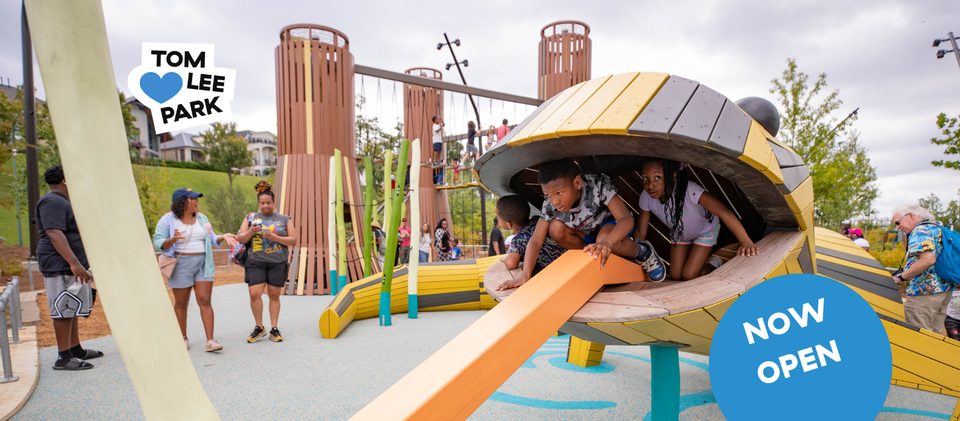
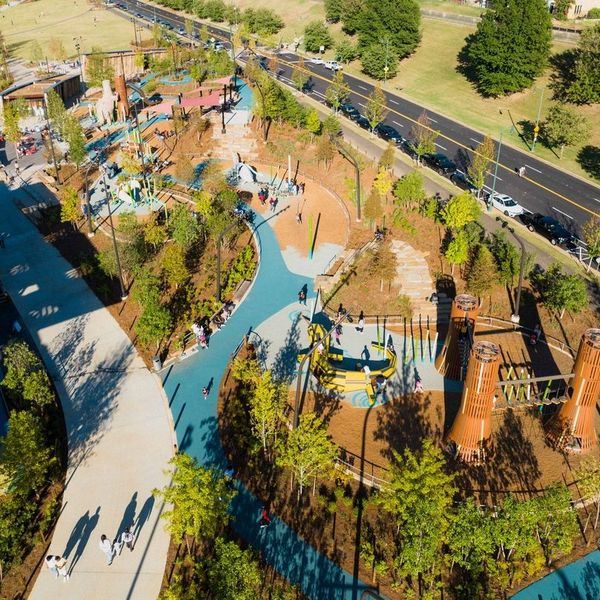

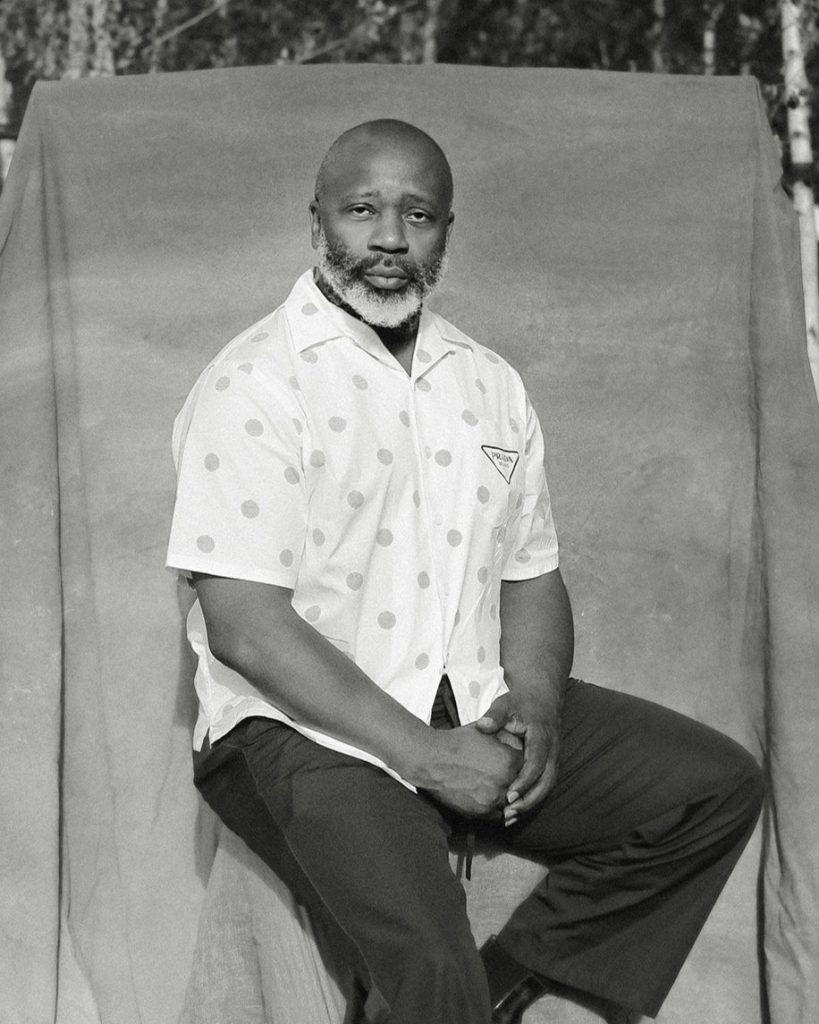
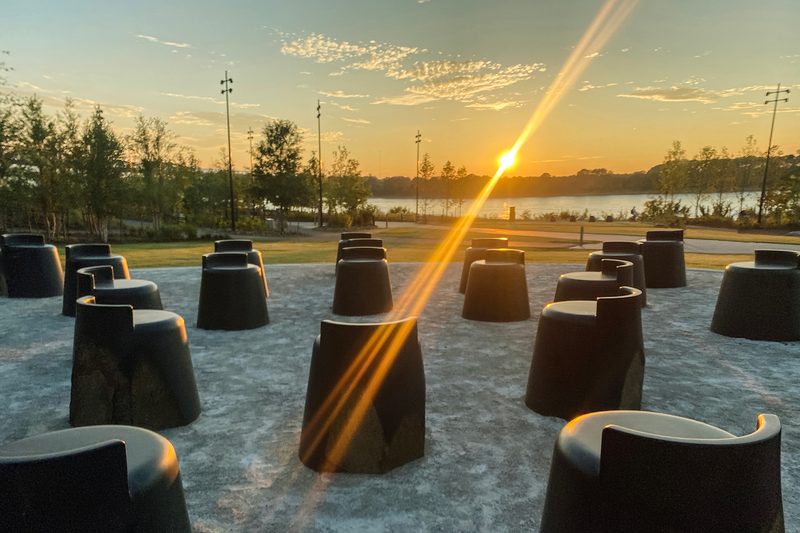



I hate to sully such a positive post. Despite the accoldaes, Tom Lee Park appears to already be at risk: Jerred Price- president of the Downtown Neighborhood Association (and rapacious self-promoter) continues to be very vocal in his demands that surface parking for the riverfront be expanded into the park. His preference is for a +200 space parking lot! It’s hard to fathom but unsurprising given his vocal opposition to park improvements, the MRPP and a personal vendetta aimed at Carol Colleta.
Very on-point comment. Unfortunately, after he commandeered downtown neighborhood association, he sees its purpose as a cult that he uses to get him on TV and feed his ego. His obsession with parking spaces over parkland show his total ignorance about what makes downtowns successful.